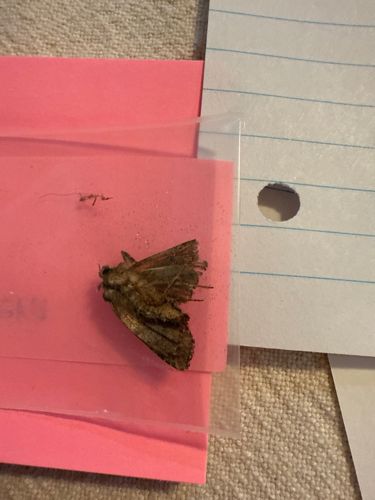Moth (likely a Owlet Moth or similar)
Scientific Name: Unable to determine exact species from image, but likely within Noctuidae family
Order & Family: Order: Lepidoptera, Family: Noctuidae (Owlet Moths)
Size: Typically 1-5 cm (0.4-2 inches) wingspan, but can vary greatly by species within the family.

Natural Habitat
Widely varied, depending on species. Typically found in gardens, fields, forests, and sometimes indoors, especially near lights at night.
Diet & Feeding
Adult moths often feed on nectar from flowers, rotting fruit, or tree sap. Larvae (caterpillars) are typically herbivorous, feeding on leaves, stems, or roots of various plants.
Behavior Patterns
Mostly nocturnal, attracted to light. Adults lay eggs on host plants, which then hatch into caterpillars. Caterpillars go through several instars before pupating, often underground or in a cocoon. The pupa then develops into an adult moth.
Risks & Benefits
Generally harmless to humans. Some species can be agricultural pests (e.g., armyworms, cutworms) whose caterpillars damage crops. Conversely, adult moths act as pollinators, and both adults and larvae are a food source for birds, bats, and other animals, contributing to the food chain.
Identified on: 10/12/2025